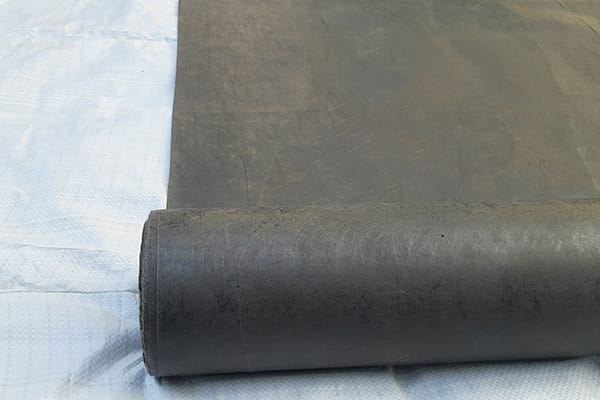Wet Wipes Non Woven Fabric Manufacturer
Non Woven Fabric For Wet Wipes is widely used in wet wipes due to its softness, durability, and absorbency. These fabrics are made from fibers bonded together rather than woven, creating a flexible, durable, and often biodegradable material. Here’s an overview of key points about non-woven fabric used in wet wipes:
Singhal Landscape Geotextile is a leading manufacturer of high-quality, soft, and absorbent nonwoven fabrics for wet wipes. These fabrics are designed for baby wipes, medical wipes, cosmetic wipes, industrial wipes, and household cleaning wipes. For premium Quality Non Woven Fabric For Wet Wipes in bulk, Contact us today!
Material Composition Used for Non Woven Fabric For Wet Wipes
Polypropylene or Polyester: Common materials used for their strength and durability.
Continuous Filament Fibers: These fibers are extruded and laid down in a random web pattern.
Key Features of Non Woven Fabric For Wet Wipes
-
Softness: Essential for skin-contact products to avoid irritation.
- Absorbency: Non-wovens made with viscose or cotton absorb liquids well, making them effective in delivering cleaning solutions.
- Strength (Wet and Dry): Necessary to prevent tearing during use.
-
Biodegradability: An increasing priority, with biodegradable fibers being more frequently used to minimize environmental impact.
-
Durability: Despite their softness, spunbonded fabrics are durable and resistant to tearing and abrasion
- Lint-Free: They do not leave behind fibers or particles, ensuring a clean finish
-
Gentleness on Skin: Wet wipes: convenient cleaning, gentle on skin, especially sensitive skin.
Common Applications of Non Woven Fabric For Wet Wipes
Baby Wipes: Require a soft, gentle fabric; spunlace with viscose or cotton is common.
Household Cleaning Wipes: May use tougher non-wovens (e.g., with more polyester) to handle scrubbing.
Medical/Antibacterial Wipes: Usually require non-wovens that are strong, lint-free, and compatible with disinfectant solutions.
Cosmetic Wipes: Soft, gentle, and highly absorbent materials are ideal for makeup removal and facial wipes.
Industrial Cleaning: Suitable for cleaning machines, tools and equipment in industrial environments.
Personal Care Wipes: Ideal for makeup remover wipes and intimate wipes
Key Benefits of Non Woven Fabric For Wet Wipes
Non-woven fabric offers many benefits that make it ideal for wet wipes, both for personal and industrial use.
- Softness and Comfort:Spunlace nonwoven fabrics are soft and gentle, ideal for baby, facial, and medical wipes.
- High Absorbency: Non-woven fabrics made with absorbent fibers like viscose or cotton can hold a large amount of liquid. This makes them effective at delivering cleaning solutions and maintaining moisture without dripping.
- Strong and Durable: Despite being soft, non-woven fabrics are durable and tear-resistant, even when wet. This ensures that wet wipes can handle the cleaning task without falling apart.
- Versatility in Texture and Composition: Nonwovens come in various textures, thicknesses, and fiber blends for diverse applications.
-
Cost-Effectiveness:Nonwoven fabric production is more efficient and cost-effective, ideal for affordable disposable products like wet wipes.
- Water Retention and Stability: Non-woven fabrics are designed to retain moisture effectively. This makes them an excellent choice for wet wipes that need to stay moist for an extended period without drying out.
-
Low-Linting:Low-lint: Ideal for sensitive surfaces like electronics and delicate skin, leaving no residue.
FAQs About Nonwoven Fabric for Wet Wipes
Why is nonwoven fabric used for wet wipes?
Softness: Nonwoven fabric is gentle on the skin, making it suitable for sensitive areas.
Absorbency: It efficiently absorbs liquids, ensuring effective cleaning and moisture delivery.
Durability: It can withstand the manufacturing process and usage without tearing or losing its integrity.
Customizability: It can be customized in terms of thickness, weight, and texture to meet specific product requirements.
How is a nonwoven fabric suitable for wet wipes made?
Nonwoven fabric is treated with various chemicals and processes to make it suitable for wet wipes:
Hydrophilization: This process makes the fabric more absorbent by increasing its affinity for water.
Antibacterial treatment: This process adds antimicrobial agents to the fabric to prevent bacterial growth.
What are nonwoven fabrics and why are they used in wet wipes?
Non-woven fabric is a material made by bonding fibers together rather than weaving them. It’s used in wet wipes for its soft, absorbent, durable, and often biodegradable properties, ideal for disposable cleaning.
Are non-woven wipes flushable?
Most non-woven wipes are not flushable, as they can cause clogs in plumbing and sewage systems. Flushable wipes break down quickly in water but should be used cautiously to reduce environmental impact.
What’s the future of non-woven fabrics in wet wipes?
Future trends focus on biodegradable materials, compostable fibers, reduced plastic use, and improved recycling. Sustainable innovations like plant-based and compostable non-woven fabrics are becoming more prominent to reduce environmental impact.
What types of nonwoven fabrics are used in wet wipes?
Common types include spunbonded nonwoven fabrics.
Can Non Woven Fabric For Wet Wipes be customized for specific applications?
Non Woven Fabric For Wet Wipes can be tailored by thickness, weight, and texture for various uses.
Are Non Woven Fabric For Wet Wipes safe for use on the skin?
Yes, nonwoven fabrics used in wet wipes are generally safe for skin contact. They are often tested for skin irritation and toxicity to ensure they are suitable for personal care products
How do I choose the right Non Woven Fabric For Wet Wipes product?
Consider factors such as absorbency, softness, strength, cost, and environmental impact. Spunbonded nonwoven fabric is often a popular choice due to its excellent balance of these properties
Specification of Nonwoven Fabric for Wet Wipes
Weight (GSM)
10–30 GSM: Lightweight, suitable for wrapping and protective covers.
30–80 GSM: Medium-weight, commonly used for reusable shopping bags and padded envelopes.
80–150 GSM: Heavier nonwoven fabrics for applications requiring more durability, such as insulated packaging and agricultural bags.
Colour:
Gray & Custom as per requirement
Width
1.6, 3.2 or as per request
Length
as per requirement
Packaging Type
Roll From
Material
Polyester/Polypropylene







